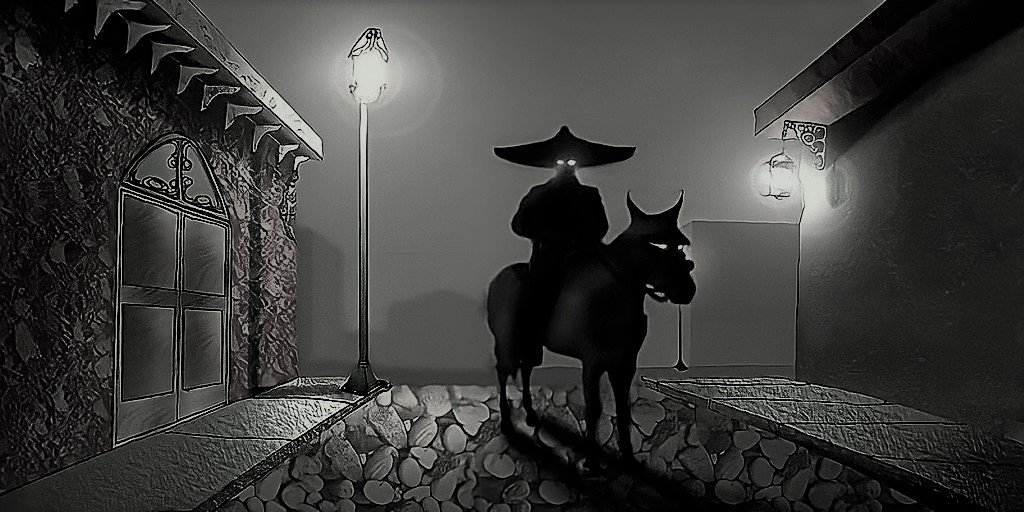The Rest Cure That Created “The Yellow Wallpaper”
Comfy but stay there long enough it becomes your coffin… dun dun dunnnn
Say you schedule an appointment with your doctor because you’ve been feeling a bit fatigued lately with a side of migraines. You can’t pinpoint when it started but you know you need a doctor’s opinion.
After describing your symptoms your doctor looks at you as if he’s seen this a thousand times before and prescribes you what he’s called the “rest cure”. For the next 8 weeks you have to stay in bed, not move for anything, eat lots of meat, and drink two quarts of milk a day.
Oh, and you can’t do anything mentally challenging.
This was a real quote cure that was prescribed by a famous doctor and many others during the late 18th and 19th century so let’s find out why and let’s put the infamous cure to rest.
Today we’re looking at a genius 18th century doctor and the treatment he prescribed that did more harm than good.
Americanitis
Studying the physical brain really took off in the 17th century, of course there was some understanding of its role and even the Incas were removing pieces of a patient's skull during surgery to some pretty impressive 90% survival rates in the 15th century.
But in 1664 Thomas Willis published the “Anatomy of the Brain” which really set into motion the next several centuries of study and it wasn’t all accurate. Around 1869, neurologist George Miller Beard made the term neurasthenia pretty popular. The problem was it was used as a catch all for a lot of different issues like depression, anxiety, fatigue, migraines, heart palpitations, nerve damage or weakness, the list goes on.
The problem for Doctor Beard was finding a treatment for neurasthenia since so many patients were conveniently being diagnosed with it to the point where it was nicknamed “Americanitis”. Enter Doctor Silas Weir Mitchell who presumably said “hold my two quarts of milk” as he walked in.
The West Cure for Men
Doctor Mitchell, often considered the father of medical neurology, was already a pretty big name having discovered causalgia or Complex Regional Pain Syndrome, erythromelalgia formally known as Mitchell’s Disease, and coined the term phantom limb.
So when he walked in with a supposed cure to a catch-all neurological disease people paid attention, especially when he claimed to have treated himself for the same Americanitis disease.
Mitchell’s treatment was widely known as the rest cure, a revolutionary cure but was different based on whether you were male or female. Why? Well because everything was way more misogynistic back then, including science.
He believed the advancements in technology, socialization, and the aftermath of war made many people live life too fast and everyone had to be grounded in their respective gender roles.
For men it was known as the West cure, he would prescribe men with at least 6 to 8 weeks of wilderness time, involving sending men out to the woods out west to rope cattle, hunt, and get in some male bonding time.
This was to get men to rest but strenuously, doing the things quote “tough men” were supposed to be doing. If you think about it, the core concepts he prescribed here are pretty effective for everyone, not just men.
Being outside and enjoying nature is a stress-relieving action, roping cattle and hunting can be seen as exercise. Essentially he was prescribing men fresh air and exercise.
Rest Cure for Women
But for women it was radically different for Doctor Mitchell. The role for women, in his mind, was to have them stay home and take care of children.
So if a woman was experiencing anxiety, fatigue, hysteria, and even blindness he generally referred to them as, “nervous women” and prescribed six to eight weeks of strict isolated bed rest, forbidden to do anything that required them to use their mind.
But that wasn’t even the most “wtf” part of the treatment. Some women, depending on the level of nervousness Mitchell thought they were, were not allowed to read, write, feed themselves, or have contact with friends and family. They even needed the doctor’s permission to sit up in bed or turn over.
And that’s just the “what the hell” part of the treatment.
The “what the fuck” part was the food consumption. Mitchell noticed nervous women were often thin and anemic and thought they should be eating more, a lot more… by force. Bread and butter three times a day, mutton chop for dinner, a pound of raw beef soup, two quarts of milk a day, and iron supplements.
Oh and the day started with a light breakfast, possibly to trick the body into thinking “this feels like a normal day” before it finds out the hard way that it is not.
Any women who refused or couldn’t eat all this food daily were force fed. If you’re picturing a woman being force fed through the mouth, you’re a bit off. Women were force fed through the nose and even the rectum.
Patients or Victims
It should come to no surprise then that if women complained about the treatment or diagnosis, Mitchell ignored them. In one case a patient complained of being unable to move and was unresponsive so Mitchell entered her room, ordered everyone out, closing the door with just the two of them.
A few minutes later he came out and when asked if she moved, Mitchell stated she would in a moment as he had just set her sheets on fire. In that case he was lucky the patient moved but in another case his assumptions that his female patients were lying led to a death.
In 1888 Winifred Howells, daughter of novelist William Dean Howells, was suffering from an illness and ended up under the care of Doctor Mitchell. He naturally believed his rest cure would do the trick and began force feeding Winifred despite her pleas that her illness was not psychological.
Winifred died shortly after.
Mitchell himself performed the autopsy and found her to have actually been suffering from an incurable disease. It’s not entirely known whether intervention of a different treatment would have saved Winifred but we’ll never know since no one gave her a chance to speak for herself.
“The Yellow Wallpaper”
But even this wasn’t the only case where it was clear the rest cure wasn’t the best cure. Charlotte Perkins Gilman was another patient under Mitchell’s care who grew to hate the treatment. Gilman suffered from postpartum depression, a disorder not widely understood at the time, which led her to be classified by Mitchell as another “nervous woman”.
He prescribed her an altered version of his rest cure, she was to have her baby with her at all times, limited her to two hours of intellectual life, and ordered her to never touch a pen, brush, or pencil for the rest of her life. Which wasn’t the best plan for Gilman as she was a writer but even then she tried out the rest cure.
After several months her condition worsened to a point where she was now contemplating suicide. The rest-cure was abandoned and instead she divorced her husband and moved away with her daughter to Rhode Island for the summer. It was only then she began to feel a change in her depression and she slowly entered recovery without the help of Mitchell’s misguided cure.
In 1890 Gilman, went on to write the short psychological horror story “The Yellow Wallpaper” showing the effects Mitchell’s rest cure had on the mind, although some effects were exaggerated by Gilman in the story. Amazing short story by the way.
Does Bed Rest Actually Help?
Along with psychological effects of staying in bed all day, paradoxically laying down all day will lead to detrimental health effects including fatigue. Bone density, muscle mass, and blood flow decrease, this could lead to diabetes and bed sores.
Eventually the rest cure fell out of favor although it wouldn’t be until the end of World War One when many doctors felt the umbrella term of neurasthenia wasn’t helpful at all when treating soldiers coming back with post traumatic stress disorder.
By the 1940’s psychiatrist Karl Menniger and others considered the rest-cure more dangerous than helpful and soon it went away. But not completely. Instead, nowadays bed rest is part of a treatment as opposed to the only treatment.
Still, even now, the reduced amount of bed rest prescribed is debated as to whether it is helpful and in many cases exercise and fresh air may be more beneficial.













